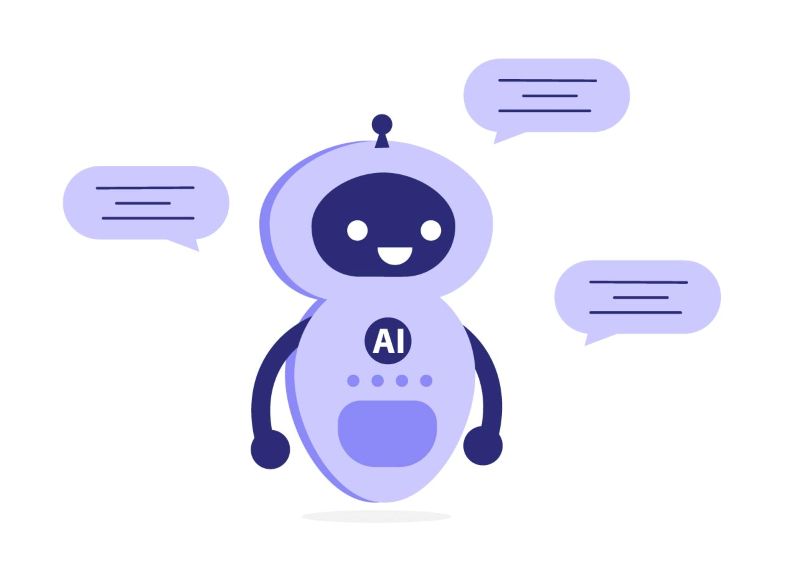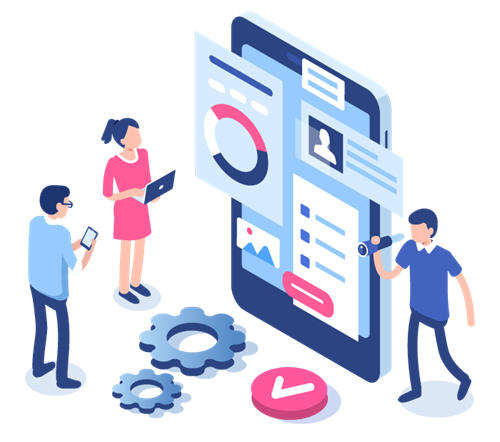Featured
Agentic AI for Contact Centers: A Complete Guide
by Gabriel De Guzman | Published On July 3, 2025

Agentic AI is transforming contact centers by boosting agent performance, slashing costs, and delivering stellar CX.
AI in the contact center isn’t exactly new. About 76% of contact centers already use chatbots (powered by AI) to enhance self-service. Many others use AI for data analysis, task automation (like summarizing and transcribing calls), or even workforce management. But now there’s a new flavor of AI in the customer service space: agentic AI for contact centers.
Agentic AI solutions aren’t just fancier chatbots, they’re tools with autonomy. They can solve complex, multi-stage problems, work independently towards goals, and even interact with other bots and software applications.
Gartner even predicts that by 2029, agentic AI tools will be solving around 80% of all customer problems – without human input. That’s massive.
So what is agentic AI, why is it so important for your contact center, and how do you harness its abilities? This guide will tell you everything you need to know.
What is Agentic AI?
Generative AI might have been the hot topic of the last few years, with its ability to create images, text, and code with almost human-like precision. Now it’s agentic AI’s turn to take the reins, and the impact is going to be massive. Agentic AI for contact centers goes way beyond your standard rule-based chatbots and automation tools.
Agentic tools combine large language models (like OpenAI’s GPT models), generative AI capabilities, machine learning, and traditional programming. All of these things work together to give agentic bots the ability to reason, act, and self-correct in real time.
Here’s what sets agentic AI apart:
- Autonomous action: Standard generative AI bots and chatbots respond to prompts or follow rules-based logic. Agentic AI completes tasks based on goals. These bots don’t just respond; they follow through, filing tickets, authorizing refunds, and scheduling callbacks.
- Context preservation: An agentic AI tool can recall past chat sessions, CRM records, or email trails. No more “please repeat your order number.” Many bots can also integrate with other business tools, to access data when necessary.
- Constant Learning: Agentic AI works on feedback loops. It constantly checks in on its performance, and adapts, learning from past resolutions and refining itself. Usually, this all happens without extra training.
- Integrations: Agentic AI bots can delegate and execute work by drawing on API connections to CRMs, knowledge bases, analytics platforms, and more.
In contrast: older chatbots are rigid. They follow a fixed decision tree and falter the moment a customer deviates. RPA (Robotic Process Automation) handles repetitive tasks, not complex decisions. Legacy systems miss nuance. Agentic AI, however, brings flexibility and initiative, closing loops that older systems left open.
Why Contact Centers Need Agentic AI
Modern contact centers are under siege. The average support agent spends 66% of their time on tasks that don’t involve actual customer help: data lookups, case logging, ticket updates. That’s inefficient, exhausting, and expensive.
To make matters worse, contact center interactions are becoming more difficult. McKinsey found call complexity has increased for the majority of companies, yet around 50-60% of discussions are transaction-based (making them ideal for automation).
Agentic AI goes beyond simply dealing with high-volume and repetitive tasks (like billing questions and password resets). It surpasses the abilities of legacy bots and traditional AI systems.
It doesn’t follow scripts – it acts based on defined outcomes. It can pivot mid-task and dynamically adapt to new challenges and data. Plus, agentic AI solutions can help connect your tech stack, managing data and tasks from your contact center software to your CRM.
According to the latest research, agentic AI for contact centers will help companies to become faster, more efficient, and even leaner in the years ahead. Over the next two to three years, these tools could help companies reduce human agents by up to 50% while ensuring they can handle up to 30% more calls than they do today – all without compromising on customer satisfaction.
Key Features and Applications of Agentic AI for Contact Centers
So, what are the features of a true agentic AI solution for contact centers? These days, the answer to that can vary. After all, plenty of companies, like Microsoft, allow organizations to build their own “agents” that can perform different tasks in varying ways.
Primarily though, companies can expect:
Multi Turn Conversations & Context Retention
A real customer interaction rarely ends after one question. People change their minds mid-sentence. They ask multiple things at once. They refer to something they said two days ago. Traditional chatbots fall apart in those situations. Agentic AI doesn’t.
It’s designed for multi-turn dialogue, meaning it can maintain and act on the flow of a conversation over time. It tracks customer history, adapts to the direction of the dialogue, and doesn’t get derailed by interruptions or tangents. If a customer drops out mid-chat and returns two hours later? The AI remembers where they left off.
Autonomous Task Automation
Agentic AI isn’t just about talking to customers; it’s about doing things for them.
We're talking full autonomous task completion, from start to finish. This includes:
- Creating and updating tickets
- Processing refunds or cancellations
- Scheduling follow-ups or callbacks
- Logging case notes
- Pulling or updating account data in backend systems
Here’s a simple use case: A customer reaches out about a billing issue. Instead of routing the query to an agent, the AI verifies the billing records, confirms the discrepancy, initiates a refund, sends a confirmation email, and logs the case for compliance. All of this is done without any human input.
Hyper-Personalized Recommendations
Customer data is often underutilized. Agentic AI can turn that around by actively leveraging everything it knows about a customer to tailor every step of the interaction.
This includes:
- Recommending the best support actions based on account history
- Offering promotions aligned with user behavior
- Anticipating customer questions and pre-emptively answering them
- Adjusting tone or urgency based on user sentiment
Instead of generic responses, customers get advice, offers, and solutions that feel made for them. The system can cross-reference behavioral data, purchase history, interaction tone, and even sentiment scores, and deliver smarter responses.
Continuous Learning from Every Interaction
Unlike traditional systems that require constant manual updates, agentic AI learns on its own. It doesn’t just execute, it evaluates.
It reviews outcomes:
- Did that last interaction solve the problem?
- Was the customer satisfied?
- Was escalation needed?
- What could have gone better?
Using those insights, the AI adjusts future behavior, choosing better phrasing, refining recommendations, or escalating sooner when needed.
Handling Tier 1 Inquiries Automatically
Most contact centers are flooded with low-complexity, high-frequency requests: password resets, order tracking, shipping confirmations, address changes, etc. These account for the majority of interactions, and they don’t require human creativity or judgment. Agentic AI can completely take over these Tier 1 tasks.
Yes, conversational AI tools can do this too, but agentic AI is more efficient. Plus, because these tools are operating with real context and backend integration, customers don’t just get a canned response, they get real solutions.
Real-Time Assistance for Human Agents
Not every task should be automated. For complex, high-empathy cases, humans still win. But even here, agentic AI can offer serious support.
During live interactions, AI can:
- Suggest responses based on prior similar cases
- Surface relevant documentation or policy snippets
- Provide in-the-moment coaching prompts
- Summarize previous interactions in real time
- Auto-fill CRM entries and case notes
This cuts down mental load, reduces errors, and lets agents focus on emotional intelligence – not toggling between 8 browser tabs.
AI-Led Quality Assurance and Coaching
Quality monitoring in most contact centers is spot-checked and reactive. But with agentic AI, every conversation can be scored, summarized, and evaluated in real time.
This allows for:
- 100% interaction coverage in QA (not just random samples)
- Detection of tone issues, policy violations, and missed steps
- Tailored coaching suggestions per agent
- Objective feedback loops without supervisor bias
It also enables faster identification of training needs and trends – allowing teams to proactively coach instead of playing catch-up.
Workflow Orchestration Across Systems
Agentic AI doesn’t work best when it’s separated from the rest of your tech. It needs to be fully integrated with your tools, CRM, ticketing platform, billing engine, knowledge base, email system, and more.
When it is:
- Tickets are logged instantly
- Customer records are updated in real time
- Email summaries are sent post-call
- Escalations are routed with full context
This cross-system orchestration ensures customers aren’t repeating themselves, agents aren’t duplicating work, and supervisors have full visibility across the journey.
Real-World Use Cases by Industry
Agentic AI for contact centers is already solving problems that bog down support teams, especially in industries where high-volume, repetitive interactions collide with customer expectations for fast, personalized service. Here are a few examples:
- Telecommunications: In telcos, customers often reach out for usage clarification, bill disputes, or plan upgrades. Agentic AI handles these multi-step tasks by analyzing usage data, validating complaints, offering resolution options, and even applying account credits, all while maintaining a natural dialogue. Instead of passing customers between departments, the AI executes the fix and provides a confirmation, end-to-end.
- Ecommerce and Retail: Order status updates, returns, and product questions represent a massive share of inbound queries. Agentic AI can look up shipping statuses or return policies, then it can initiate returns, update inventory systems, and notify the customer via their preferred channel. It also handles post-purchase follow-ups, like asking for reviews or recommending related products based on purchase history.
- Finance: Banking and insurance customers often ask about transaction histories, policy changes, or fraud concerns. Agentic AI is capable of verifying identities, walking users through security protocols, and initiating claims, all while complying with industry regulations. These tasks, once time-consuming and sensitive, can now be automated without compromising compliance.
- Enterprise IT & SaaS: In software and IT services, agentic AI acts as the first responder. It can guide users through password resets, troubleshoot common issues, or gather key information before handing off to a human tech specialist. This triage layer shortens queues, ensures accurate routing, and provides agents with context-rich histories so they can jump straight into solving the problem.
The Benefits of Agentic AI for Contact Centers
At this point, the advantages of using agentic AI for contact centers should already be clear. But, if you’re looking for a quick clarification, the results are:
- Lower Costs, Higher Efficiency: One of the clearest benefits is the bottom line. By automating routine, repetitive tasks like password resets, billing inquiries, and appointment scheduling, agentic AI slashes operational costs. Contact centers often report handling more interactions with fewer resources, leading to a reduction in cost-per-contact. Plus, because AI agents are always on, businesses avoid the added cost of staffing for peak periods.
- Faster Resolutions: Customers don’t just want answers, they want answers now. Agentic AI dramatically reduces average handle time by instantly retrieving data, completing tasks, and resolving common issues autonomously. There's no waiting on hold, no manual lookups, no follow-ups needed.
- Smarter, Happier Agents: Repetitive tasks burn people out. With AI absorbing the bulk of Tier 1 requests and automating low-value work, agents are freed up to focus on complex, high-empathy conversations. That translates to better job satisfaction, improved retention, and stronger service quality.
- Improved Customer Experience: Consistency, speed, and personalization are the cornerstones of great CX. Agentic AI delivers all three. By remembering customer history, adapting tone and behavior in real time, and acting autonomously, these systems create smoother, more humanlike experiences.
- 24/7 Coverage Without Drop-Off: Agentic AI doesn’t need breaks. It works across different time zones, languages, and channels, offering immediate support anytime, anywhere. That’s a competitive advantage in industries where being available is the difference between keeping or losing a customer.
How to Implement Agentic AI in Your Contact Center
Deploying agentic AI for contact centers can be tricky – just like any major tech upgrade. You’ll need to think carefully about your approach if you want to drive adoption, and get the right results, without hitting major hurdles.
Step 1: Assess Current Workflows
Before you automate, understand what’s consuming your agents’ time. Dive into CRM and chat analytics to identify your highest-volume, lowest-complexity inquiries. Think billing issues, order tracking, password resets, Tier 1 tasks that follow predictable steps.
But don’t stop at conversation logs. Go deeper:
- Map the full process: from user request to resolution.
- Identify bottlenecks and repetitive handoffs.
- Highlight any backend systems required (ticketing, billing, CRM).
The goal here is to uncover use cases where AI can not only respond but complete the task autonomously.
Step 2: Set Clear Objectives
Don’t launch AI without a target.
Start by asking:
- What business problems are we trying to solve?
- How will success be measured?
Your KPIs might include:
- Average handle time (AHT)
- First contact resolution (FCR)
- Cost per interaction
- Containment rate (issues resolved without human intervention)
- Customer satisfaction (CSAT or Net Promoter Score)
Set specific goals like:
“Reduce AHT on billing queries by 20% within 60 days.”
Step 3: Choose the Right Platform
Not all AI is created equal. Look for a platform that supports:
- Multi-turn, context-aware conversation
- Real task execution (not just FAQs)
- Seamless integration with your existing tech stack
- Omnichannel capabilities: chat, voice, email, and more
Some platforms specialize in customer support; others focus on orchestration or analytics. Choose based on your needs today, but don’t forget to future-proof for tomorrow.
Step 4: Build a Pilot
Start small and prove value fast.
Pick a contained, high-volume workflow that can be clearly measured, like password resets or order status inquiries. Train the AI using historical chat data and define how you’ll monitor performance.
Launch with a limited audience (a single support channel or a specific customer segment). Use this phase to:
- Measure performance vs. human agents
- Tune responses and workflows
- Identify system integration needs
- Gather agent and customer feedback
Step 5: Ensure Integration & Governance
Agentic AI is only as powerful as the systems it connects to. For end-to-end execution, it must:
- Pull customer data from your CRM
- Update ticketing platforms
- Interact with billing/order management systems
- Log interactions for auditing and analytics
At the same time, governance is non-negotiable. Ensure you’re using data encryption at rest and in transit, role-based access controls, and compliance policies.
Step 6: Train & Empower Staff
If you want agents to embrace AI, make them part of the rollout.
Host training sessions that show:
- How AI can offload repetitive tasks
- How agents can use AI suggestions in live interactions
- How new roles (like AI trainers or conversation designers) might emerge
Frame AI as a helpful colleague, not a competitor. Ask for feedback from your teams as you roll out new features and capabilities.
Step 8: Monitor, Learn, and Scale
Once your pilot shows strong results, expand with confidence.
Use dashboards and analytics to track:
- Containment rates
- Resolution time improvements
- CSAT changes
- Error rates
- Escalation volume
Then gradually roll out agentic AI to additional workflows, support channels, and customer segments.
Challenges and Considerations with Agentic AI
Just like most AI solutions, agentic AI tools still come with a handful of challenges to address. The most important things to be aware of during your rollout include:
- Data Privacy & Security: Agentic AI often accesses sensitive customer data. Use practices like data minimization, anonymization, encryption, and regular security audits, especially under GDPR or CCPA
- Hallucinations & Mistakes: AI can make confidently wrong decisions. Keep task boundaries firm. For example, refund issuance over certain thresholds should trigger human approval.
- Over-Automation: Focus on repetitive tasks, not complex or high-empathy situations. AWS says full autonomy for nuanced issues remains theoretical, so humans should stay in the loop.
- Change Management: Workers worry about job security. Position the tech as a partner, not a replacement. Use pilots, transparent communications, and training to build trust.
- Governance & Accountability: Set clear ownership and accountability for agent decisions. Require audit trails and human supervisorship for high-risk actions.
Embracing Agentic AI for Contact Centers
Agentic AI is the future of contact centers. These AI tools go way beyond scripted bots and IVRs. They hold full conversations, take autonomous actions, personalize responses, and learn as they go. Used correctly, they lead to faster resolutions, lower costs, happier customers, and empowered human agents who no longer carry the burden of repetitive grunt work.
But this evolution doesn’t run on autopilot. It requires intentional implementation, starting small, integrating smartly, and managing change with care. Do it right, and agentic AI for contact centers becomes your silent, tireless, and agile team member.
Want to learn more about the latest evolutions in AI for contact centers? Check out our comprehensive guide to conversational AI for customer service.
More from our blog
 Looking to enhance customer interactions and boost satisfaction? Discover best practices for contact centers using customer engagement solutions.
Looking to enhance customer interactions and boost satisfaction? Discover best practices for contact centers using customer engagement solutions.
 Delivering exceptional experiences to customers is non-negotiable for all businesses today. After all, great customer service doesn’t just improve employee retention; it enhances your profits.
Delivering exceptional experiences to customers is non-negotiable for all businesses today. After all, great customer service doesn’t just improve employee retention; it enhances your profits.
 When I first discovered ComputerTalk, I took my time exploring their corporate LinkedIn account and website to get a better sense of not just what the company does, but also how employees felt about working there.
When I first discovered ComputerTalk, I took my time exploring their corporate LinkedIn account and website to get a better sense of not just what the company does, but also how employees felt about working there.

